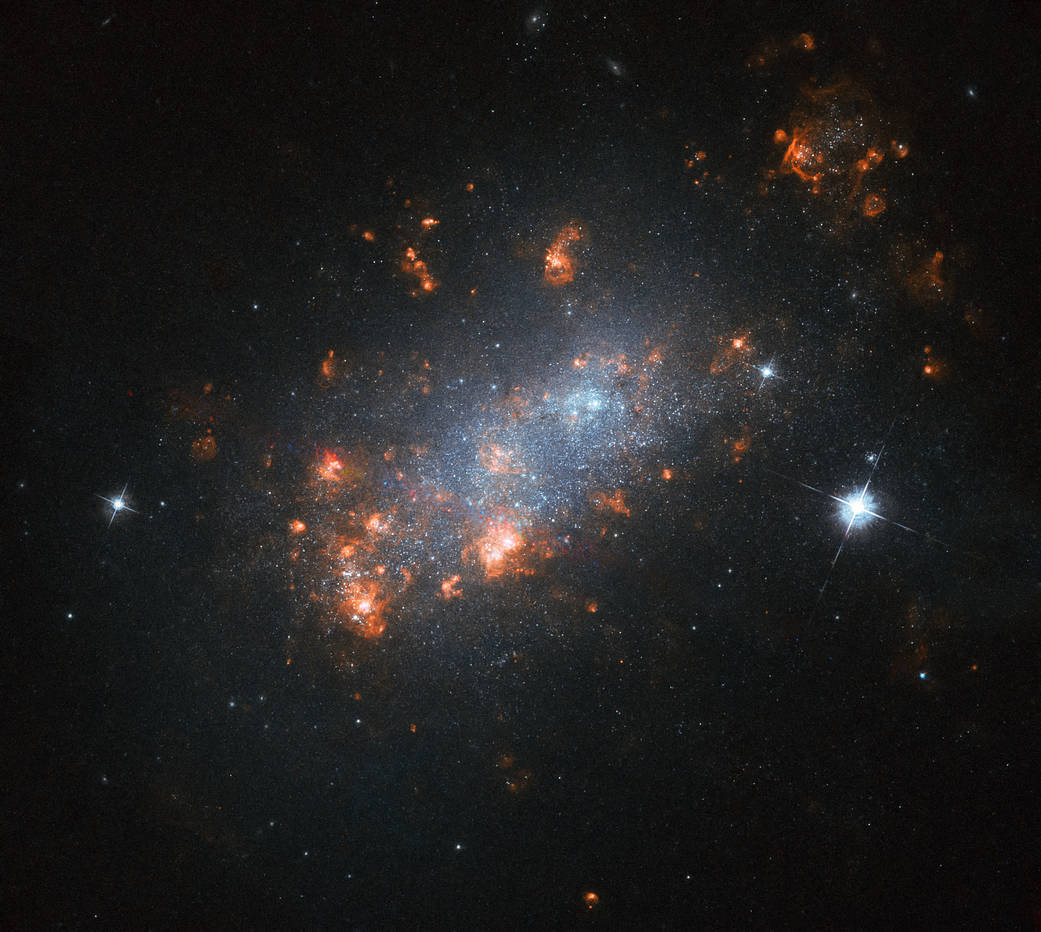The galaxy NGC 1156 resembles a delicate cherry blossom tree flowering in springtime in this Hubble image. The many bright “blooms” within the galaxy are in fact stellar nurseries — regions where new stars are springing to life. Energetic light emitted by newborn stars in these regions streams outwards and encounters nearby pockets of hydrogen gas, causing the gas to glow with a characteristic pink hue.
NGC 1156 is located in the constellation of Aries (the Ram). It is classified as a dwarf irregular galaxy, meaning that it lacks a clear spiral or rounded shape, as other galaxies have, and is on the smaller side, albeit with a relatively large central region that is more densely packed with stars.
Some pockets of gas within NGC 1156 rotate in the opposite direction to the rest of the galaxy, suggesting that there has been a close encounter with another galaxy in NGC 1156’s past. The gravity of this other galaxy — and the turbulent chaos of such an interaction — could have scrambled the likely more orderly rotation of material within NGC 1156, producing the odd behavior we see today.
Text credit: ESA (European Space Agency)
Image credit: ESA/Hubble, NASA, R. Jansen
在这张由哈勃太空望远镜拍摄的照片中,NGC 1156星系就像一棵在春天开花的娇嫩的樱花树。星系中许多明亮的“花朵”实际上是恒星的孕育地——新恒星在这些区域如雨后春笋般涌现。这些区域的新生恒星发出的高能光向外流动,并与附近的氢气区相遇,使这些气体发出特有的粉红色光芒。
NGC 1156位于白羊座(The Ram)中。它被归类为一个不规则的矮星系,这意味着它不像其他星系那样有一个清晰的螺旋形或圆形,而且在较小的一侧,尽管有一个相对较大的中心区域,那里的恒星密度更大。
NGC 1156内部的一些气团与星系其他部分的旋转方向相反,这表明在NGC 1156过去曾与另一个星系发生过近距离的碰撞。另一个星系的引力——以及这种相互作用的湍流混沌——可能打乱了NGC 1156内部物质可能更有序的旋转,产生了我们今天看到的奇怪行为。







